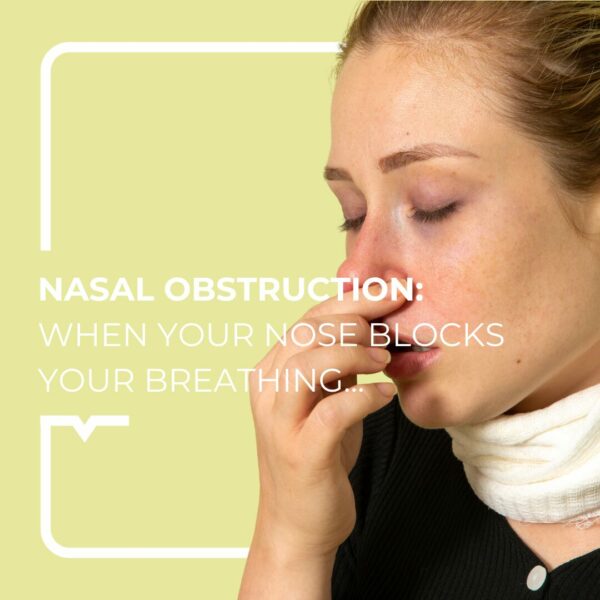Emma, 28, visits her doctor due to persistent difficulty breathing through her nose, accompanied by frequent snoring, constant nasal discharge, and occasional headaches. After examination, the physician identifies a nasal obstruction, a common but often underestimated condition that can affect sleep quality and overall well-being.
Hello, this is Dr Joy! Today, we’re going to talk about nasal obstruction, understand its causes, recognize its symptoms, and explore how to treat it to breathe better and improve your quality of life.
I – What is nasal obstruction?
Nasal obstruction refers to a partial or complete blockage of the nasal passages, making breathing difficult. This blockage can be temporary, as with a common cold, or chronic, in cases of inferior turbinate hypertrophy or a deviated septum.
The most common symptoms include a stuffy nose, snoring, constant or post-nasal drip, headaches, and a feeling of facial pressure. If prolonged, these symptoms can negatively impact sleep quality and daily life.
II – Common causes
Nasal obstruction can be caused by:
- Colds or viral infections, which cause temporary inflammation of the nasal passages,
- Allergies, such as pollen or dust mites,
- Nasal polyps, benign growths in the nasal lining,
- Deviated septum, reducing the airway space,
- Sinusitis, causing congestion and facial pain,
- Less commonly, nasal tumors,
- Hypertrophy of the inferior turbinates.
III – What are the possible consequences?
Prolonged nasal obstruction can lead to sleep disturbances, such as frequent awakenings or shallow sleep, resulting in daytime fatigue (tiredness or drowsiness experienced during the day, often due to insufficient or poor-quality sleep) and reduced concentration. It also increases the risk of recurrent infections, including sinusitis, and may cause headaches or a sensation of facial pressure. Additionally, it can make breathing during physical activity more difficult and reduce overall quality of life.
IV – How is nasal obstruction treated?
Treatment depends on the underlying cause. It may include home care and lifestyle adjustments, such as regular nasal irrigation, humidifying indoor air, and avoiding known allergens.
Medications may also be prescribed, including nasal corticosteroids, or antihistamines to reduce inflammation and improve airflow.
In some cases, surgery may be necessary, for example when large nasal polyps (benign growths of the nasal or sinus lining, large enough to partially or completely block the airway and impair breathing) are present, in cases of significant septal deviation, or if obstruction persists despite medication. Surgery performed by an ENT specialist can restore nasal airflow, improving both breathing and sleep.
Many people suffer from nasal obstruction without realizing it, but solutions exist. If you recognize these symptoms, you can consult our ENT specialist, Dr Tiago Chantre, at the Alegria Medical Center.
Beijinhos!
Dr Joy
This information is not a substitute for medical advice.
You must seek the advice of your doctor or another qualified health professional with any questions you may have regarding your health condition.
Sources:



